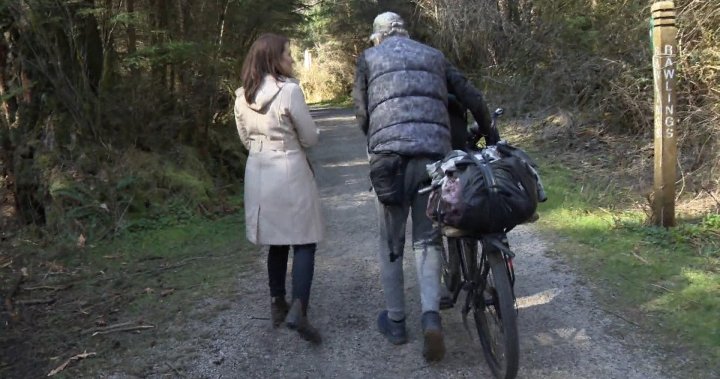After living in Vancouver’s Stanley Park for over three decades, 74-year-old Christenson Bailey has seen significant changes in the park’s landscape. With thousands of trees being cut down and removed, Bailey has noticed how the once lush forest is becoming a shadow of its former self. Despite the changes, Bailey remains at peace, believing that life goes on and that the environment must adapt to a continuum. He has accepted the changes around him, including the efforts of the Vancouver Park Board to combat an infestation of hemlock looper moths by cutting down trees.
Bailey has been living in the park since 1990, setting up a small campsite deep in the forest to make art, be inspired, and live in peace. Over the years, he has lived off the land, catching wild geese and ducks for food, and staying on good terms with park rangers. Despite the challenges of living in the park, such as the noise from planes flying overhead and the loss of wildlife, Bailey has remained resilient. However, he has started making plans to leave the park in 2019 and reintegrate into mainstream society.
With the help of the Vancouver Police Department and other city agencies, Bailey is preparing to transition into housing after living in relative isolation for over three decades. While he has resisted leaving the park in the past, Bailey understands the need to move on and is exploring different housing options. He hopes to become an artist in residence, live in shipping container housing, or even return to living in Montreal, preferably in a natural setting. Bailey acknowledges that he is a vastly different person from when he first entered the park in 1990.
Bailey credits his self-development to meditation, art, and the quiet of the forest, which have helped him shed burdens and become enlightened. He reflects on how his analytical abilities were in disarray before coming to Stanley Park but have since improved through self-teaching and introspection. Bailey emphasizes the importance of understanding the truths within oneself and using that as a guide for personal growth and forward progress. Despite the challenges he faces in transitioning out of the park, Bailey remains optimistic about his future and the opportunities that lie ahead.
As Bailey prepares to leave Stanley Park and transition into housing, he reflects on the changes he has witnessed in the park over the years. While the loss of trees and wildlife has been significant, Bailey remains at peace with the idea that life goes on and the environment must adapt to its ever-changing surroundings. With the support of city agencies and a renewed sense of self, Bailey looks forward to the next chapter of his life beyond the park, embracing new possibilities and opportunities for growth and self-expression.


